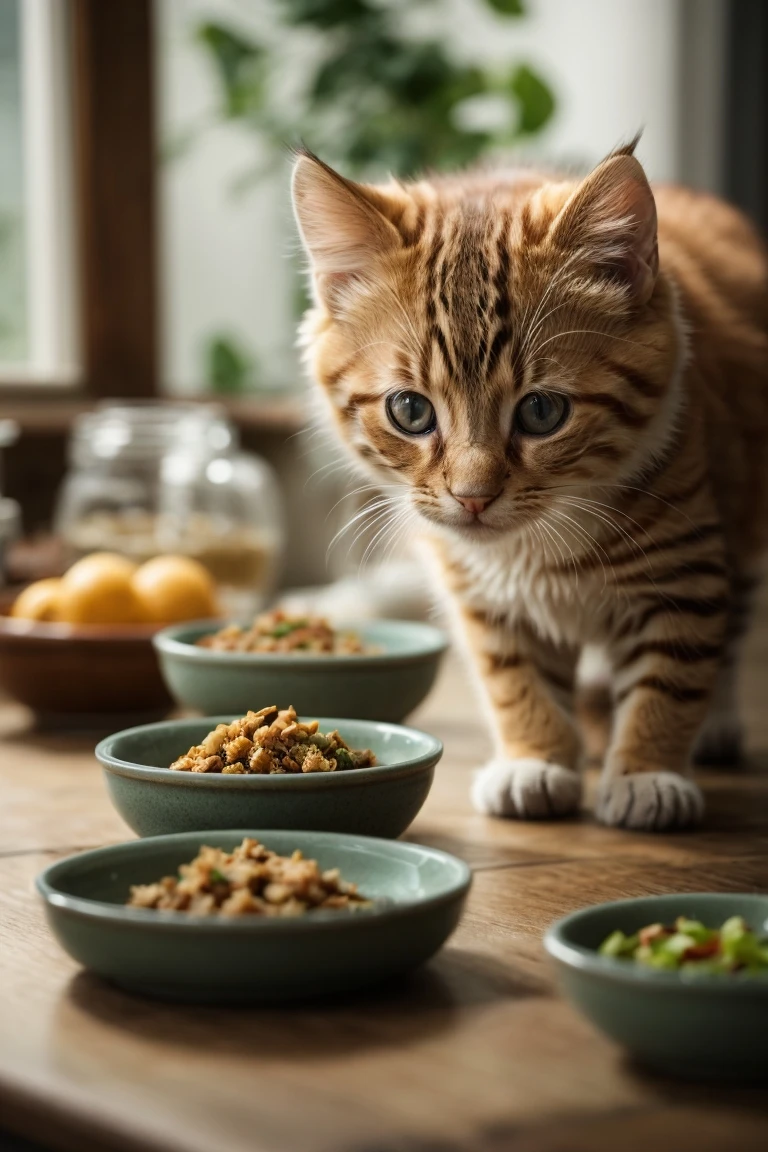How to Transition Your Kitten to a New Food

Kittens have sensitive digestive systems, so food transitions require patience to prevent diarrhea and other issues. When switching your kitten to a new food, follow these steps to help ensure a smooth transition.
Picking the Optimal New Food
Consult your veterinarian for advice on the best food to meet your kitten’s needs. Look for a high-quality kitten formula with more nutrients to support growth and development. Wet or dry food depends on your kitten’s preferences. Around 12 months old, gradually transition to adult cat food.
Ingredients to Look For
- Animal-based proteins like chicken, turkey, eggs for muscle growth
- Whole grains like brown rice and oatmeal for fiber
- Fruits and vegetables for vitamins
- Omega fatty acids for healthy skin and coat
Ingredients to Avoid
- Corn, wheat, soy as common kitten allergens
- Artificial colors, flavors and preservatives
- Too much fiber can upset the digestive system
Transitioning Slowly in Stages
When switching foods, mix a small amount of the new food with the old food. Gradually increase the ratio of new to old food over 5-7 days to allow adaptation and avoid GI upset.
Transition Schedule
- Days 1-2: 75% old food, 25% new food
- Days 3-4: 50% old food, 50% new food
- Days 5-7: 25% old food, 75% new food
- Day 8: 100% new food
Serving Tips
- Feed set amounts based on your kitten’s size
- Split daily portions into 3-4 small meals
- Stick to a consistent feeding schedule
- Always provide fresh water
If diarrhea occurs, slow the transition and contact your veterinarian.
Monitoring Your Kitten's Adjustment
Weigh your kitten weekly and track food intake during the transition. Note any changes in appetite, energy level, stool consistency, and litter box habits. Contact your vet if you have any concerns. Be patient - every kitten adjusts differently.
Troubleshooting Issues
Diarrhea or vomiting can indicate you transitioned too rapidly. Try probiotics to support digestive health. Rule out illness if symptoms persist. Remove the new food and slowly reintroduce a lesser amount mixed into the old food.
Frequently Asked Questions
How long should I transition my kitten to a new food?
Ideally, transition over 5-7 days. On days 1-2, do a 25%/75% mix. On days 3-4, do 50/50. On days 5-7, do 75% new food. This gradual transition reduces GI upset.
What is the best food to transition a kitten to?
Look for a high-protein, grain-free kitten formula without corn, wheat, soy, or by-products. Consult your vet on nutritional needs. Wet or dry depends on your kitten’s preferences.
How do I know if my kitten has an upset stomach from new food?
Diarrhea, vomiting, loss of appetite, increased gas, and changes in energy level can indicate food transition issues. Slow the transition and contact your vet if symptoms persist.
Should I mix wet and dry food when transitioning?
Yes, mixing the old wet food with the new dry food (or vice versa) helps gradually transition food textures. Just keep adjusting ratios slowly.
How long after transitioning foods should I watch for issues?
Monitor your kitten closely for the first 2-3 weeks after fully switching foods. Note appetite, energy, stool consistency, and behavior. Call your vet if any concerns arise.
Key Takeaways on Transitioning Kitten Food
- Consult your veterinarian on the optimal food for your kitten's needs. Look for high-quality ingredients.
- Read food labels carefully and avoid corn, wheat, soy, by-products, and artificial additives.
- Gradually transition over 5-7 days by mixing a small amount of new food with the old food.
- Closely monitor your kitten during and after the transition.
- Seek prompt veterinary guidance if diarrhea, vomiting, or other symptoms occur.
- Be patient! Kittens adjust differently. Slow transitions help avoid GI upset.
With proper selection and gradual introduction of new food, your kitten will stay happy and healthy as they grow. Discuss any diet concerns with your veterinarian.